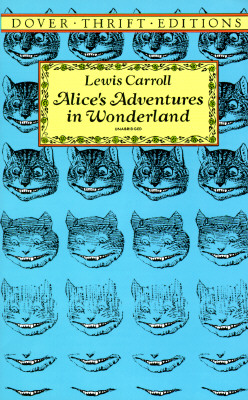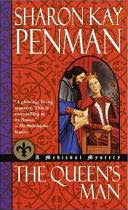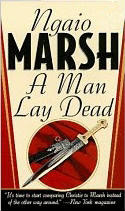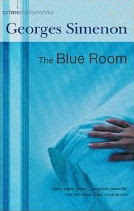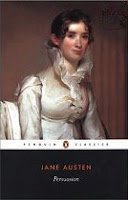 Newly-minted solicitor Jonathan Harker is sent by his employer to Transylvania to conclude some house-purchasing business with a foreign nobleman. Count Dracula seems like an ideal host: welcoming, hospitable, and genuinely interested in everything his guest can tell him about England; but he gives Jonathan the creeps. He never eats, drinks, or appears by daylight; he has neither mirrors nor servants; he delivers strange warnings and has a peculiar reaction to the sight of blood.... Soon Jonathan realises that he’s literally imprisoned in a nightmare from which his only escape could well be death - if not at the hands (or teeth) of Dracula, then at those of the castle’s other residents.
Newly-minted solicitor Jonathan Harker is sent by his employer to Transylvania to conclude some house-purchasing business with a foreign nobleman. Count Dracula seems like an ideal host: welcoming, hospitable, and genuinely interested in everything his guest can tell him about England; but he gives Jonathan the creeps. He never eats, drinks, or appears by daylight; he has neither mirrors nor servants; he delivers strange warnings and has a peculiar reaction to the sight of blood.... Soon Jonathan realises that he’s literally imprisoned in a nightmare from which his only escape could well be death - if not at the hands (or teeth) of Dracula, then at those of the castle’s other residents.
In Whitby, Mina Murray is becoming increasingly worried. Her fiancé is missing somewhere in Eastern Europe, and her friend Lucy Westenra is behaving oddly. From bubbling over with news of receiving three proposals in one day and of her impending wedding, she has become vaguely anxious and has resumed her childhood habit of sleepwalking. Things get worse after a violent storm and the accompanying arrival of a Russian ship occupied only by a large dog and a dead captain. The dog disappears, and soon so does Lucy, whom Mina discovers in the churchyard across the bay with a tall dark figure bending over her.... After this latest sleepwalking misadventure, Lucy goes into a decline. Her rejected suitor Dr John Seward - director of a lunatic asylum which contains a most unusual patient - sends for his old mentor. Van Helsing diagnoses the problem at once, but fate seems to be against his efforts to save Lucy from death - or from something worse.
By the time Mina has retrieved Jonathan from Buda-Pesth and settled into life as Mrs Harker, Van Helsing has recognised the extent of the threat facing the capital and its ‘teeming millions’. He recruits the Harkers and the three friends who all loved Lucy to help him rid the world of the monster. But Dracula is cunning; he attacks his hunters in a way they never expected and flees the country and it will take a dash across Europe in the face of mortal and spiritual peril to stop him.
Last summer I discovered how fun it can be to amuse myself and freak out my mother by reading ghost stories during power outages; and I originally intended to save Dracula for the same purpose if I didn’t get round to reading it during the Banned Book Challenge. But the temptation was too much to resist and I’m glad I caved; reading this by lantern-light in a dark and silent house would have been altogether too atmospheric. There were several moments where, had the story been on the screen and not the page, I would have been peeking through my fingers. (Which is a completely nonsensical reaction, but I do it anyway.) The chilling effect is heightened by the novel’s being composed of journals, letters, newspaper articles, telegrams, and one very eerie ship’s log. Since the only person who really knows what’s going on - Van Helsing - is operating on a need-to-know basis, the other narrators, and hence the reader, remain largely in the dark as to what’s coming next and just what Dracula is capable of. Previous vampire experience is unlikely to help, as Stoker’s creations are different things from the Undead of Anne Rice, Laurell K Hamilton, or Joss Whedon. Having read or watched all three, part of the fun came from comparing the abilities and characteristics of the various vamps. I don’t want to give anything away, but at least one common vampire preconception will fall. There are some quite gruesome moments, too; you don’t want to discover, like I did, exactly what the lunatic Renfield was up to while eating dinner. It was enough to put a damper on even my appetite.
There are a couple of other small flaws. You never find out just how Jonathan managed to get from Castle Dracula to the nearby town of Bistritz; I can only assume that Dracula decided to keep his word. And you do need to accept a hefty string of coincidences: Dracula’s first target on reaching England just happens to be the friend of the fianceé of the poor bloke he just terrified half out of his wits, and her three suitors are all friends, one of whom just happens to live next door to Dracula’s London home and be acquainted with Van Helsing, one of the presumably very few people who could realise what was going on. But by the time this arises, you’re already some distance into the novel and Jonathan’s journal has gotten you hooked. That’s another way in which the alternating first-person viewpoints are so effective; they put you right inside the minds of characters who are having a harrowing time of it. My favourite of all was Mina; from her first appearance it was clear that she was eminently capable, yet being a Victorian novel I expected that the men would find a way to set her aside out of harm’s way and face Dracula without her. And sure enough, they did - then quickly realised what a mistake they’d made. Good thing, too, as it was her intelligence that enabled them to find Dracula at all. She was there to the end, revolver in hand, and showed enormous courage to get there; and she’ll remain one of my favourite characters and this one of my favourite books - an absolutely fangtastic read!
Rating: A

